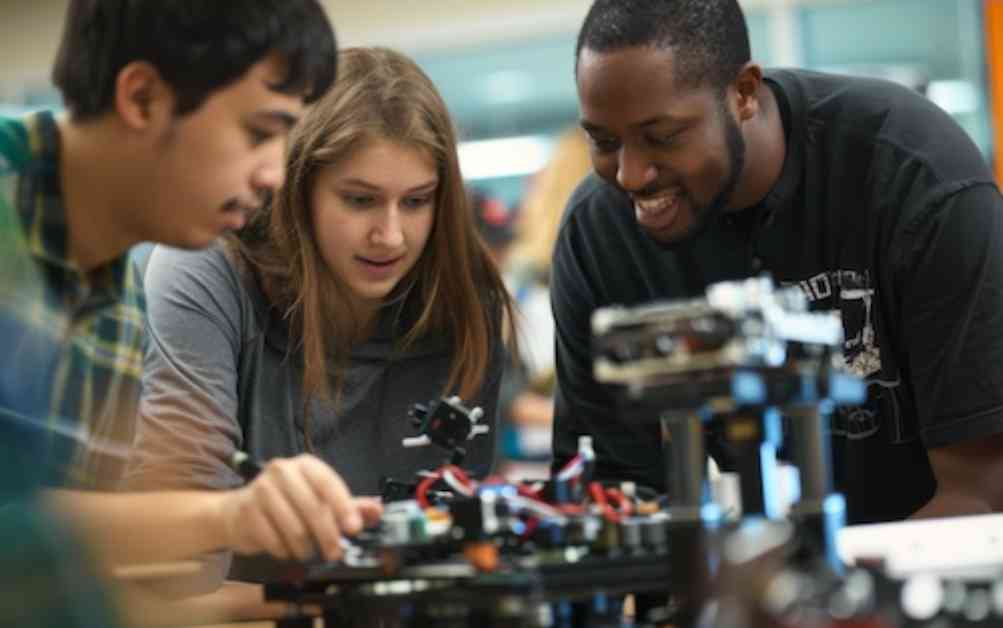The rapid pace of technological innovation in today’s world is undeniable. As we look to the future, it’s clear that Generation Alpha will be the most technically innovative generation in history. But the question remains: how can we empower these young minds to harness their skills and create groundbreaking technologies that will shape the world? The key lies in providing them with immersive, hands-on learning experiences from a young age.
Experiential learning has been proven to be highly effective in building conceptual understanding and helping students retain information better. By engaging in hands-on activities such as robotics, electronics, 3D printing, and physical computing, children are able to reach their full potential and develop crucial skills for the future. Additionally, incorporating art and music into their learning experiences can further boost their creativity and innovation.
One crucial method for tapping into a child’s creativity is through hands-on projects that foster problem-solving skills. By allowing kids to take risks and make mistakes in a safe environment, they are able to think creatively and develop a mindset of resilience and perseverance. These physical projects not only encourage students to engage with materials in new ways but also promote more active participation in the classroom.
Furthermore, starting experiential learning activities early in the school year can help set the tone for the classroom and establish a culture of hands-on learning. By exposing children to a variety of projects such as robotics, pottery, and music production, they are able to hone their critical thinking and creative skills, setting a strong foundation for future innovation.
Encouraging collaboration, feedback, and the showcasing of work in a supportive environment is also essential for fostering creativity and innovation in children. By allowing students to work together on projects, share their work with others, and receive constructive feedback, they are able to learn from each other and improve their skills. This collaborative approach mirrors the real-world work environment and teaches students the importance of teamwork and communication in the innovation process.
In order to make hands-on learning resources more accessible to educators nationwide, there are a variety of online modules, workshops, and resources available that provide lesson plans, video tutorials, and experiential learning kits. These resources can help teachers incorporate nontraditional curriculum into their classrooms and provide students with the tools they need to build conceptual understanding and retain information more effectively.
By embracing experiential learning resources and fostering a culture of collaboration and supportive feedback, educators can empower Generation Alpha to become the most technically innovative generation in history. With the right skills and mindset, these young minds will be equipped to tackle the challenges of tomorrow and create world-changing technologies that will shape the future.
Benefits of Hands-On Learning for Technical Innovation
Hands-on learning offers a multitude of benefits for students, especially when it comes to fostering technical innovation. By engaging in physical projects and experiential activities, children are able to develop crucial skills that are essential for success in the digital age. One of the key advantages of hands-on learning is that it encourages students to think creatively and problem-solve in real-world scenarios.
When students are given the opportunity to work on hands-on projects such as building robots or creating music, they are able to apply their knowledge in practical ways and develop a deeper understanding of the subject matter. This hands-on approach not only helps students retain information better but also allows them to explore their interests and passions in a more meaningful way.
Additionally, hands-on learning promotes collaboration and teamwork, which are essential skills for success in the innovation process. By working together on projects and sharing their work with others, students learn how to communicate effectively, exchange ideas, and leverage their collective knowledge to achieve a common goal. This collaborative approach mirrors the way work is accomplished in the real world and prepares students for future careers in technology and innovation.
Implementing Hands-On Learning in the Classroom
Integrating hands-on learning into the classroom can be a transformative experience for both students and educators. By incorporating experiential activities and projects into the curriculum, teachers can create a more engaging and dynamic learning environment that encourages creativity and innovation. Here are some practical ways to use technology for classroom creativity and navigate science literacy in the digital age:
1. Robotics: Introducing students to robotics can be a fun and interactive way to teach them about engineering, programming, and problem-solving. By building and programming their own robots, students can learn valuable skills that are essential for success in the digital age.
2. Electronics: Teaching students about electronics and circuitry can help them understand how technology works and how to create their own electronic devices. By working with components such as resistors, capacitors, and transistors, students can develop a deeper understanding of how electronic systems function.
3. Animation: Exploring animation can be a creative way for students to express themselves and learn about storytelling and visual communication. By creating their own animations, students can develop skills in design, storytelling, and digital media production.
4. 3D Printing: Introducing students to 3D printing can open up a world of possibilities for creativity and innovation. By designing and printing their own objects, students can learn about design principles, manufacturing processes, and materials science.
5. Physical Computing: Teaching students about physical computing can help them understand how computers interact with the physical world. By working with sensors, actuators, and microcontrollers, students can create interactive projects that respond to their environment.
By incorporating these hands-on learning activities into the classroom, educators can empower students to develop the skills and mindset they need to become the innovators of tomorrow. Through experiential learning and creative projects, Generation Alpha can harness their technical skills and create world-changing technologies that will shape the future.

